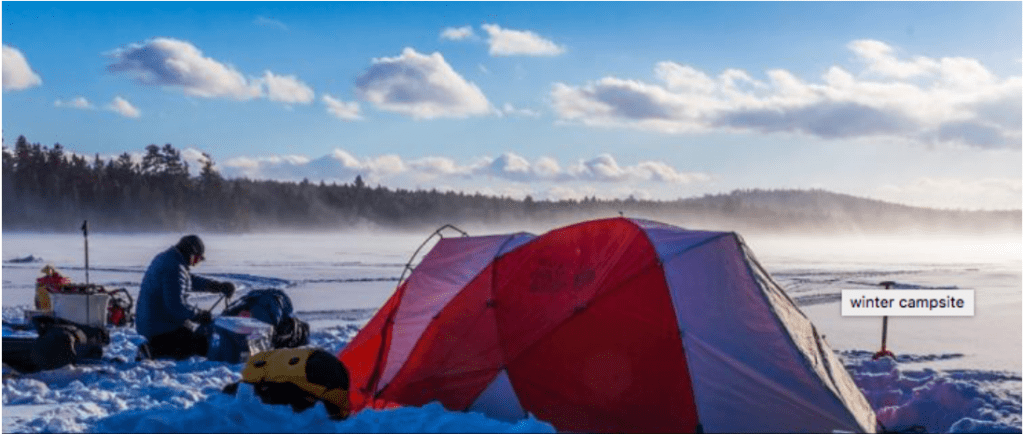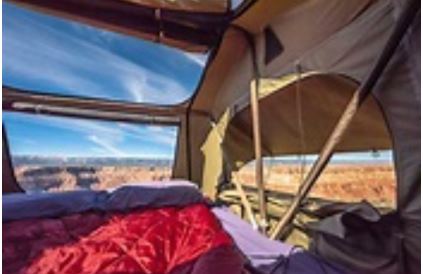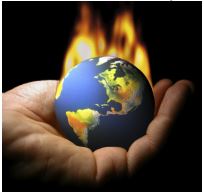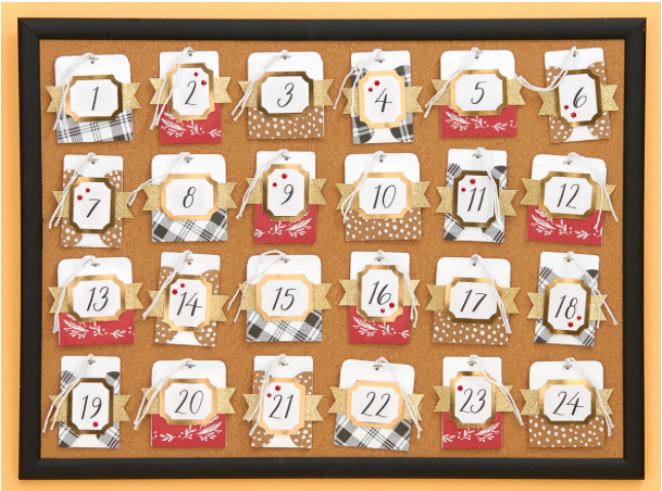
1. Please save the date, December 6, 2018, 1 p.m. to 3 p.m., to participate in ADEQ’s webinar on the Clean Water Act Section 404 rulemaking process. In addition to updates from ADEQ, each of the Technical Work Group (TWG) chairs will provide a progress report and ask for any questions and comments. The presentation will be available prior to the meeting. Options to participate include calling the conference line phone number or participating by WebEx. Comments and questions will be taken by email or through WebEx.
Join WebEx meeting >
Meeting passcode: fBAEBNEG
Conference call: 240-454-0879
Access code 801 526 005#
Send e-mail questions before and during the meeting: cwa404@azdeq.gov
Please continue to visit the CWA 404 web page for updates on TWG progress and meeting information at | azdeq.gov/cwa-404 >
2. Do You Love To Camp In The Snow? 10 Tips for Your First Time Camping in Winter Snows. Staying warm and comfortable is easier than you think. It’s easier than you may think to stay comfortable while winter camping. People prospered in frigid climates long before synthetic down and GoreTex, so you don’t necessarily need to break the bank at REI to stay warm and happy in winter conditions. On the other hand, you’ll be in serious trouble if you head out into the freeze underprepared. Check the weather forecasts and make sure your tent, sleeping bag, and clothes can handle the conditions. It’s best to keep it simple on your first trip—stick to routes commonly traveled in the winter, and save that weeklong excursion for when you have more experience.

Here are 10 other tips to keep in mind as you prepare for your first trip. Many of these were sourced from Kevin Callan’s recently published Complete Guide to Winter Camping. Callan, a longtime outdoor enthusiast and author of 16 books, skillfully covers the basics of winter camping and showcases tips and tales from some of North America’s most accomplished winter campers. Check it out if you’re planning a trip and want to learn from the best.
1. Layer up
The lynchpin to your winter camping getup is a close-fitting base layer to trap body heat. A pair of polypropylene long johns work great as a cheaper option. You’ll also want an insulating layer that you can take on and off as you warm up and cool down throughout the day. A down jacket, lightweight fleece, or even your favorite wool sweater will do the job. Your outermost layer should protect you from wind, snow, and rain, so choose a shell with weather-proof lining like GoreTex. Avoid cotton altogether when packing for your trip—it’s no good at wicking moisture, and once it’s wet it can cool you faster than standing naked in the cold.
2. Stay dry
That brings us to a second winter camping maxim: Stay dry. Water conducts heat better than air does, so wet clothes will quickly lower your body temperature. Even working up a sweat can dangerously cool you down in the long run. Take it slow and peel off layers to limit perspiration.
Wet feet mean frozen feet, so leave the trail runners at home. Waterproof boots and gaiters (along with snowshoes) are a must when trudging through deeper snow. If you’ll be hiking on top of packed snow, your normal hiking boots with some waterproofing treatment should be fine.
In general, it’s better to overpack than to run out of dry clothes—you’ll probably regret packing ultra-light when you slide on that pair of damp socks in the morning.
3. Sleep with your gear
If you have any wet clothes by day’s end, keep them in your sleeping bag to dry them out overnight. You’ll also want to cozy up to any gadgets you brought, as cold temperatures quickly drain battery life.
4. Cowboy coffee.
If fireside nights are the highlight of any winter camping trip, cold mornings are the hardest part. The promise of hot coffee will make getting out of your sleeping bag a whole lot easier. All you need for a batch of “cowboy coffee” are grounds and hot water. Bring a pot of water to a rolling boil, move it from the heat source, dump in one tablespoon of coffee grounds per cup of water, and let it steep for 10 minutes. The simplest way to settle the grounds is to tap the coffee pot with a knife a few times. If you’re feeling up to it, try the classic but riskier method of swinging the coffee pot in a windmill motion a few times to settle the grounds with centripetal force. Once you’re done, pour yourself the most well-deserved cup of coffee you’ve ever had.
5. Strategic urination
Experienced winter campers seem to stress this one. Drink plenty of water, but don’t idle when nature comes calling—your body will burn up valuable calories to heat any urine stored in your bladder. Keep an extra bottle in the tent (unmarked at your own peril) so you don’t have to venture into the cold for a midnight pee. Backpacker magazine compiled a list of products that make this winter camping ritual easier for women.
6. Choose the right sleeping bag First
see if you can make do with what you have. You can avoid shelling out for a brandnew cold weather bag by buying a sleeping-bag liner, which can extend the temperature rating of your sleeping bag by 10 to 15 degrees. If the forecasted lows are way out of your sleeping bag’s range, you’ll want to invest in a 0-degree or lower bag
7. Don’t forget the pad
 Sleeping pads aren’t just there for comfort—they keep you off the frozen ground, which saps away your body heat faster than the air outside. There are some expensive insulated inflatable sleeping pads out there, but the important part is staying off the ground, so choose something you can afford that does the job. 8. Choose your campsite
Sleeping pads aren’t just there for comfort—they keep you off the frozen ground, which saps away your body heat faster than the air outside. There are some expensive insulated inflatable sleeping pads out there, but the important part is staying off the ground, so choose something you can afford that does the job. 8. Choose your campsite
8. Choose your campsite wisely
A lot goes into finding the right winter campsite. As usual, the guiding principle is shelter from the elements. Avoid the bottom of hills, where cold-air troughs form, and the tops of hills, which can be exposed to wind. Choose a flat site, and compress the snow where you plan to pitch your tent by walking around on it—packed snow insulates heat better than loose snow. Make sure the tent is well staked down, and pitch it with the door perpendicular to prevailing winds.
9. Bring a book.
Winter nights are long, so you’ll be logging quite a few hours in your sleeping bag. Bring a book to pass the time. Check out Sierra magazine’s list of last summer’s best ecoconscious reads for some ideas.
10. Pitch a tent inside your car.

This is a great way to stay warm through the night if you plan on car camping in the winter. Rigging a tent inside a car with clothespins may seem a little harebrained, but I’ve tried it in below-freezing weather and found that it does the trick. The car provides some added insulation, so it’s worth a try if your camping gear can’t quite handle the weather outside. Source: Green Style. Sierra Club
3. Climate Change Report. Green Style.
 The nation’s leading federal scientists gave new meaning to “Black Friday” last week when they released the starkest warning yet, that without immediate action, global warming will fundamentally transform the United States—a warning so precise in its calculus that a gimmicky attempt to bury the news during a holiday was little more than a distraction. As families and friends across the country enjoyed the Thanksgiving break, the Trump administration released the fourth National Climate Assessment, choosing to do so on the busiest shopping day of the year in a transparent attempt to hide it from media scrutiny. The effort was a flop: Scientists, journalists, and leaders in government and the private sector across the country and around the world moved quickly to broadcast the climate assessment, and its dire findings dominated headlines over the weekend. The report is the federal government’s clearest statement to date that the reckless burning of fossil fuels for the last two centuries has put the nation on a collision course with a variety of nearbiblical planetary consequences, from extreme drought and massive storms to monster wildfires, sea level rise, and the multiplication of dangerous diseases. Those consequences, the assessment makes clear, are not for future generations to experience at some distant date. They are already here, with nightmare scenarios unfolding within our lifetimes unless leaders act now. However, even though the current administration published this report, the president continues to refute its finding
The nation’s leading federal scientists gave new meaning to “Black Friday” last week when they released the starkest warning yet, that without immediate action, global warming will fundamentally transform the United States—a warning so precise in its calculus that a gimmicky attempt to bury the news during a holiday was little more than a distraction. As families and friends across the country enjoyed the Thanksgiving break, the Trump administration released the fourth National Climate Assessment, choosing to do so on the busiest shopping day of the year in a transparent attempt to hide it from media scrutiny. The effort was a flop: Scientists, journalists, and leaders in government and the private sector across the country and around the world moved quickly to broadcast the climate assessment, and its dire findings dominated headlines over the weekend. The report is the federal government’s clearest statement to date that the reckless burning of fossil fuels for the last two centuries has put the nation on a collision course with a variety of nearbiblical planetary consequences, from extreme drought and massive storms to monster wildfires, sea level rise, and the multiplication of dangerous diseases. Those consequences, the assessment makes clear, are not for future generations to experience at some distant date. They are already here, with nightmare scenarios unfolding within our lifetimes unless leaders act now. However, even though the current administration published this report, the president continues to refute its finding
4. End Of Year Charitable Contributions.
We are rapidly approaching the end of the time when charitable contributions can be made before the new tax season. The editor is a fan of local charities. That’s why I suggest giving to EnviroInsight.org (Enviroinsight 4840 W Las Palmaritas, Glendale, AZ) , Oak Creek Watershed (https://oakcreekwatershed.org/donate) and one worldly charity, Heifer.org. Give and take that amount you have given off your 2018 taxes
5. Advent Calendars – History Of. December is the start of Advent. But What Is It?
Origin of the Advent Calendar
The Advent Calendar is a newer tradition compared to Santa, the Christmas Tree and the exchanging of gifts, but it has developed into being a well-known activity for many families, especially in Europe and the United States. The advent is considered the first twenty-four days of December, being a countdown for Christmas. Originally, the advent calendar was started by Protestant Germans in the 19th century. In its creation, the Advent Calendar was not exactly molded into this format. Instead, the Germans would use candles to signify the days and chalk to write out their own calendars. The idea of the calendar many of us know today began in 1851, with a wooden calendar being made with a devotional being carved into the calendar. It wasn’t until the early 1900s for the calendar to become commercialized.
Commercialization of Advent Calendar
In Austria, a newspaper company printed an Advent calendar for their readers; the next year, they inserted their own version of the calendar. Another newspaper company in the city of Hamburg, Germany, used a Christmas clock as the “countdown” for the holiday, being its own version of the Advent calendar. In 1908 one particular inventor’s clever idea boomed the calendar’s popularity and success.
Gerhard Lang has been formally credited for the advent calendar that we have grown to love and adore today. Being from Germany himself, Lang’s inspiration derived from his mother, who made him this model as a child, with colorful pictures and figures drawn on the Page 6 calendar. Lang made a cardboard style that was delivered through newspapers, allowing for a “swing door” to be on the calendar. With this innovation, the calendars could “contain” an object or a quote. The calendar with the swing door is secured; it requires for the participant to open the door, where they discover their prize and obtain the goodie inside. In this time frame, the goodie was either a picture or a quote.
 As the 1930s struck, Lang’s company had to close down, thanks to the rising tensions of World War II and a cardboard shortage occurring. The advent calendar was on hold until post- WWII, when the trend resurfaced. In countries like Germany, the calendar was seen as a refreshing glimpse of hope and nostalgia for the better days. As the 1950s appear, the advent calendar started to put chocolate into the mix, allowing for the present of the day to be a little treat. Coincidentally, as chocolate began to enter the European map of the calendar, Americans jumped on board too. President Dwight Eisenhower has been credited with bringing the Christmas calendar to the states, giving them to his grandchildren.
As the 1930s struck, Lang’s company had to close down, thanks to the rising tensions of World War II and a cardboard shortage occurring. The advent calendar was on hold until post- WWII, when the trend resurfaced. In countries like Germany, the calendar was seen as a refreshing glimpse of hope and nostalgia for the better days. As the 1950s appear, the advent calendar started to put chocolate into the mix, allowing for the present of the day to be a little treat. Coincidentally, as chocolate began to enter the European map of the calendar, Americans jumped on board too. President Dwight Eisenhower has been credited with bringing the Christmas calendar to the states, giving them to his grandchildren.
Today’s Advent Calendar Today a lot of different Advent Calendare are sold sale prior to the first day of December, and the calendars are reasonably priced. Nearly every retailer supplies the calendars, and nowadays they can contain everything from traditional paper drawings and rhymes to chocolates, alcohol and even Lego.
While the Advent calendar is considered one of the beloved moments of Christmas, it should also be known one cannot celebrate it wrong! If you want to continue this fine tradition and create your own Advent Calendar online, please order on the button below. It might not be filled with candy, but it will be a perfect reason to bring visitors to your website day after day in December 3
 6. Holiday Eating And More!
6. Holiday Eating And More!
Every year, Collectively, we throw away a lot of food: 40 percent of food in the United States goes uneaten. Every time you throw away food, that’s money down the drain. In fact, a four-person family loses about $1,500 a year on wasted food. Instead, place leftovers in a zip-lock bag and freeze. Enjoy the food in the weeks to come.
